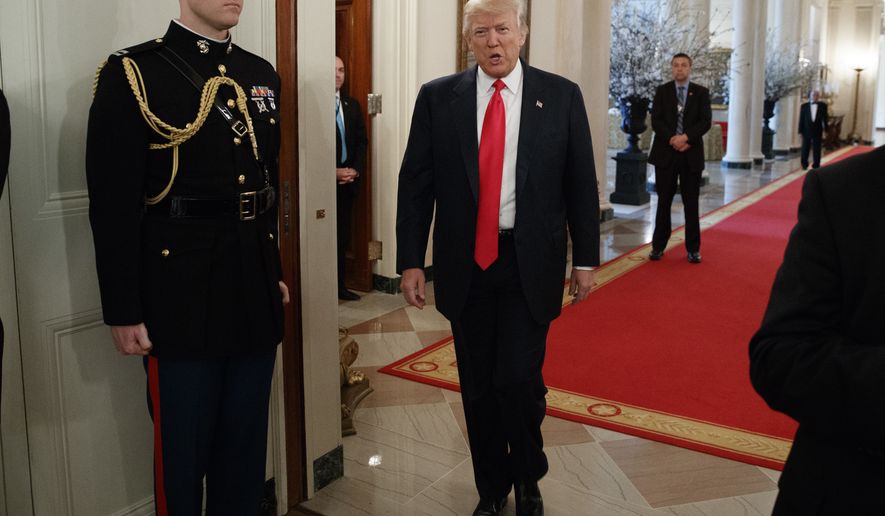President Trump’s 2018 budget will slash foreign aid in order to boost defense spending, he said Monday morning, promising cuts to almost every non-security category.
His budget envisions a $54 billion spike in spending by security agencies, with the money coming from cuts to domestic discretionary programs.
In remarks to the nation’s governors at the White House, Mr. Trump said his budget will include an “historic increase” in defense spending to rebuild a “depleted” military.
“This budget will be a public safety and national security budget,” the president said.
Mr. Trump also said his spending plan will contain more spending for infrastructure. He lamented that the U.S. has spent trillions on military operations in the Middle East over the past two decades without winning wars.
“We’re nowhere,” the president said. “We don’t fight to win. We spend $6 trillion in the Middle East, and we have potholes all over our roads.”
An Office of Management and Budget official, speaking on condition that he not be named, said foreign aid programs will take a disproportionate share of the cuts, as Mr. Trump moves to make good on his campaign promise to lessen the U.S. role and ask other countries to pony up.
“This budget expects the rest of the world to step up,” the official said.
Defense hawks on Capitol Hill were already positioning to outbid Mr. Trump.
Senate Armed Services Committee Chairman John McCain said the $54 billion boost would bring defense spending next year to $603 billion. He said that was just 3 percent more than President Obama had envisioned.
Mr. McCain said the department needs $37 billion more than Mr. Trump is calling for.
“With a world on fire, America cannot secure peace through strength with just 3 percent more than President Obama’s budget. We can and must do better,” Mr. McCain said.
Budget analysts, though, said the problem isn’t too little money, it’s bad spending decisions.
“The defense budget is blotted with massive amounts of waste and spending that respond to the military needs of a world that doesn’t exist anymore,” said Veronique de Rugy, senior research fellow at the Mercatus Center at George Mason University. “Any additional increase in defense spending without addressing these issues raises a serious risk that the new injection of funds will once again be allocated based on politics or outdated priorities rather than national security concerns.”
Monday’s initial look at Mr. Trump’s budget dealt only with very general top-line discretionary spending numbers, which account for about 40 percent of the total budget.
The other 60 percent are automatic spending programs such as Social Security, Medicare and Medicaid — the biggest drivers of ballooning spending. The White House budget office said Mr. Trump’s plans for those programs will come later, with the release of his full budget.
• Dave Boyer can be reached at dboyer@washingtontimes.com.
• Stephen Dinan can be reached at sdinan@washingtontimes.com.




Please read our comment policy before commenting.